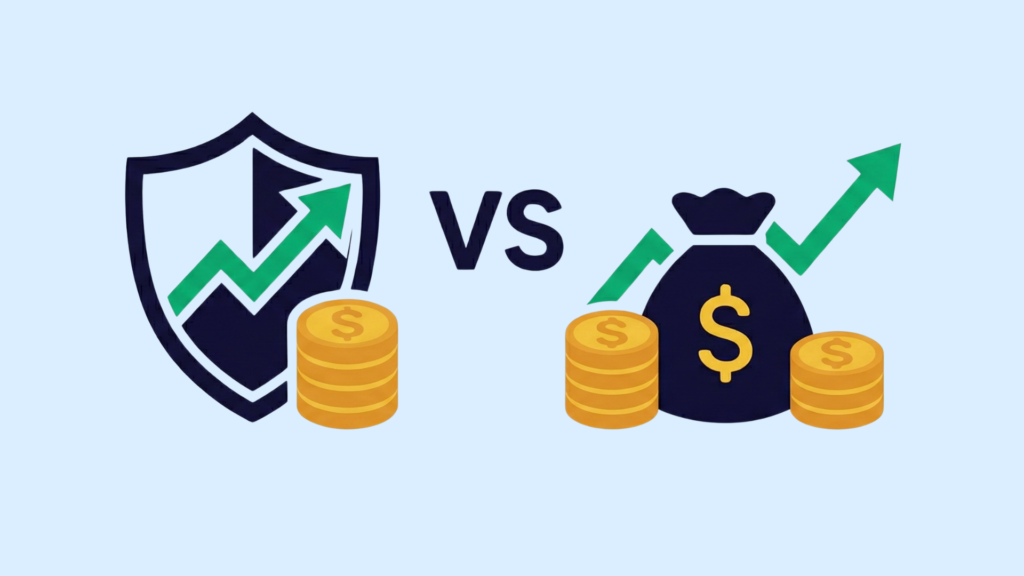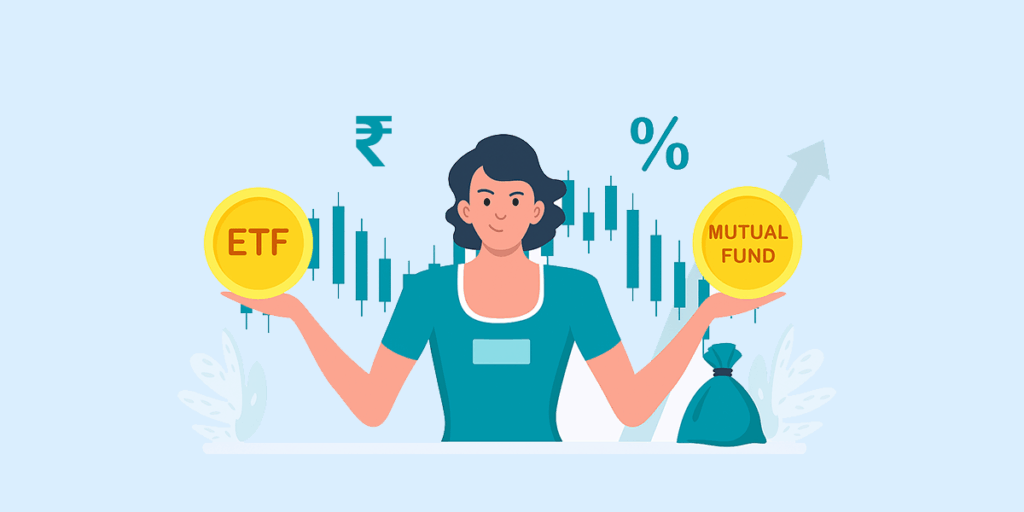Every time you invest in a mutual fund through an agent, broker, or distributor, a small part of your money goes toward their commission: the fee they earn for facilitating and advising on your investment.. While this cost may seem minor, it can influence your long-term returns.
In this blog, we’ll explain what mutual fund commissions are, how they work, the types of commissions, and how investors can minimise their impact to make smarter investment choices.
Understanding Mutual Fund Commissions
A mutual fund commission is the payment made to intermediaries—like distributors or agents—by the Asset Management Company (AMC) for bringing investors into the fund. It acts as an incentive for promoting specific mutual fund schemes.
The commission is not paid directly by investors, but is included in the expense ratio of a ‘Regular Plan’ mutual fund. This means that while investors don’t make an out-of-pocket payment, a small portion of their investment returns goes toward covering these distribution costs.
Types of Mutual Fund Commissions
Mutual fund commissions are typically divided into two major categories:
- Upfront Commission:
- Paid once when a new investor or investment is brought in.
- The SEBI regulations have largely phased out upfront commissions to promote transparency, so this is now rare
- Trail Commission:
- A recurring annual commission is paid to distributors as long as the investor remains invested in the fund.
- Encourages distributors to focus on long-term client relationships instead of short-term sales.
- Typically, it ranges from 0.5% to 1% per year for equity funds and 0.2% to 0.5% for debt funds.
- One-Time or Transaction-Based Commission:
- Offered in special cases like NFOs (New Fund Offers) or large bulk investments.
- Not a recurring payment.
Mutual Fund Distributor Commission
Distributors earn commissions primarily through the trail model, where they receive a small percentage of the total assets managed through their client base each year.
How it works:
- The AMC deducts a portion of the expense ratio as a distributor fee.
- The commission continues as long as the investor remains invested in the mutual fund.
- This aligns the distributor’s earnings with investor retention and fund performance.
For example, if a distributor brings ₹10 lakh worth of investments into an equity fund with a 1% trail commission, they would earn ₹10,000 per year as long as the investment stays active.
Percentage of Distributor Commissions
The commission rate varies by fund type, AMC policy, and investor profile. Typical ranges are:
| Fund Type | Trail Commission (%) | Upfront Commission (if any) |
| Equity Mutual Funds | 0.8% – 1.0% | Up to 1% (rarely offered) |
| Hybrid Funds | 0.5% – 0.8% | Up to 0.5% |
| Debt Mutual Funds | 0.2% – 0.5% | Minimal or none |
Some AMCs offer performance-linked or volume-based incentives, especially to distributors handling large assets under management (AUM).
Mutual Fund Broker Commission
Mutual fund brokers are compensated based on the assets they help bring into the fund and the duration of investor retention. Here’s how their commission model typically works:
- Brokers earn a trail commission, which is a recurring payment calculated as a percentage of the client’s investment value.
- Some may also earn upfront commissions for onboarding new investors or mobilising significant assets.
- The brokerage is included in the mutual fund’s expense ratio, meaning investors indirectly bear the cost through slightly reduced returns.
Commission Structure for Brokers
Brokers usually receive two types of commissions from AMCs:
| Commission Type | Description | Typical Range |
| Upfront Commission | One-time payment for acquiring new investors or large investments. Rare after SEBI reforms. | 0% – 1% |
| Trail Commission | Annual recurring payment based on the investor’s fund value. Paid as long as the investor stays invested. | 0.2% – 1% |
For example, if a broker helps an investor put ₹5 lakh into an equity fund with a 1% trail commission, they earn ₹5,000 per year as long as the investment remains active.
Mutual Fund Agent Commission Chart
A mutual fund agent commission chart outlines how much commission agents earn across different types of mutual funds. It depends on factors such as:
- Fund category (equity, debt, or hybrid)
- Investment duration
- Assets managed (higher AUM may attract additional incentives)
- AMC policies and regulatory limits set by SEBI
Example of Mutual Fund Agent Commission Chart
Here’s an example of how mutual fund agent commissions are typically structured:
| Type of Mutual Fund | Upfront Commission (%) | Trail Commission (Yearly %) | Total Potential Commission (Annualised %) |
| Equity Mutual Funds | 0.5% – 1.0% | 0.8% – 1.0% | 1.3% – 2.0% |
| Hybrid Mutual Funds | 0.3% – 0.8% | 0.5% – 0.8% | 0.8% – 1.6% |
| Debt Mutual Funds | 0% – 0.3% | 0.2% – 0.5% | 0.2% – 0.8% |
How Mutual Fund Agent Commission Affects Investors
The commissions paid to mutual fund agents and distributors are deducted from the fund’s total assets, as part of the expense ratio. This means:
- The higher the commission, the higher the expense ratio, which in turn reduces the investor’s net returns.
- Over time, even a small difference (for example, 0.5% annually) can significantly affect long-term gains due to compounding.
- In regular mutual fund plans, a portion of the expense ratio goes toward agent and distributor commissions, while direct plans exclude these fees.
For example, if two investors put ₹5 lakh each into the same mutual fund — one in a regular plan (expense ratio 1.5%) and the other in a direct plan (expense ratio 1%) — the direct plan investor could earn significantly more over 10 years, purely from reduced commission costs.
How to Minimise Commission Costs as an Investor
Investors can easily reduce or eliminate commission-related costs by taking a few strategic steps:
- Invest in Direct Mutual Fund Plans: Direct plans bypass intermediaries, which removes distributor commissions from the expense ratio.
- Use Online Investment Platforms: Trusted online portals and AMC websites let you invest directly without involving agents.
- Compare Expense Ratios: Before investing, check the fund’s expense ratio; lower ratios usually mean fewer commission-related costs.
- Review Fund Type: Passive or index funds typically have lower commissions and expenses than actively managed funds.
Conclusion
Commissions are an essential part of the mutual fund ecosystem — they reward agents and distributors for helping investors make informed investment choices. However, these commissions are built into the fund’s costs, which can slightly reduce investor returns.
For those who prefer convenience and advice, investing through distributors can be worthwhile. But for cost-conscious and experienced investors, direct mutual fund plans offer a more efficient way to build wealth over the long term.
Moreover, for people seeking a way to get started in mutual funds with a low cost structure is to start investing with a Daily SIP is very attractive, as be able them to do it for merely ₹11 a day. Because you are investing with very small amounts daily in SIPs, you can simply and affordably construct your portfolio while avoiding the commissions and trading inefficiencies of everyday investing. You can sit back and let compound interest work for you over time!
Frequently Asked Questions (FAQs)
How do you avoid commission in mutual funds?
To avoid commissions in mutual funds, invest in direct mutual fund plans instead of regular plans. Direct plans are available through the AMC’s website, MF Utility, or online investment platforms and exclude distributor commissions.
How much commission does a SIP agent get?
A SIP agent typically earns a trail commission of 0.5%–1% annually on equity funds and 0.2%–0.5% on debt funds. The amount is deducted from the fund’s expense ratio, not charged directly to the investor.
How to avoid fees on mutual funds?
To avoid fees on mutual funds, opt for direct plans, invest via the AMC’s online portal, and avoid frequent redemptions or switches that attract exit loads. Choosing index or low-expense-ratio funds also helps reduce costs.
Which mutual fund gives the highest commission?
Equity mutual funds typically offer the highest distributor commission, generally 0.8%–1% per year, followed by hybrid funds (0.5%-0.8%) and debt funds (0.2%-0.5%).
Disclaimer
The information provided in this article is for educational and informational purposes only. It should not be considered as financial or investment advice. Investing in stocks involves risk, and it is important to conduct your research and consult with a qualified financial advisor before making any investment decisions. The author and publisher are not responsible for any financial losses or gains that may result from the use of this information.























